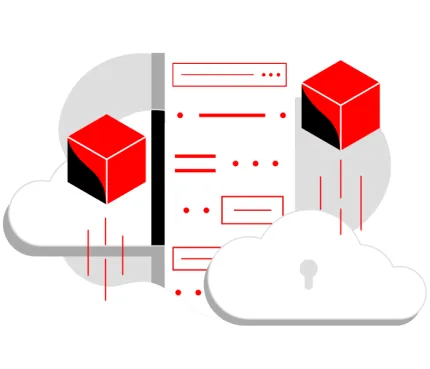Recently, I spotted a question on a mailing list asking how to move container images from an internal/build registry to a production one. To put it another way: how would you copy images from registry A to registry B? I’m going to show you a really easy way to do this with Skopeo.
The first approach is simple, and it’s what most people would do:
Pull the image from internal.registry/myimage:latest Tag the image with production.registry/myimage:v1.0 Push to production.registry/myimage:v1.0
This works reasonably well and many people are already used to doing it with the docker command:
docker pull internal.registry/myimage:latestdocker tag internal.registry/myimage:latest production.registry/myimage:v1.0docker push production.registry/myimage:v1.0
This approach has some downsides though:
- The user needs to have
dockerinstalled on the system. - The
dockerdaemon needs to be started on the system. - The
dockerdaemon runs with privileges.
This approach is quite heavy for a simple operation such as copying an image from one registry to another. Suppose that all you do on a system is copying an image from the internal/build registry to the production registry. Do you really need a fully privileged docker daemon up and using resources on your system?
Enter skopeo copy
Skopeo is a command line tool for working with remote image registries. Skopeo doesn’t require a daemon to be running while performing its operations. In particular, the handy skopeo command called copy will ease the whole image copy operation. Without further ado, you can copy an image from a registry to another simply by running:
skopeo copy docker://internal.registry/myimage:latest /
docker://production.registry/myimage:v1.0
The copy command will take care of copying the image from internal.registry to production.registry. Notice how the tagging operation went away by specifying the desired image name for the production registry directly in the command.
Say your production registry requires credentials to login in order to push the image, skopeo can handle that as well:
skopeo copy --dest-creds prod_user:prod_pass docker://internal.registry/myimage:latest /
docker://production.registry/myimage:v1.0
The same goes for credentials for the source registry (internal.registry) by using the --src-creds flag.
Afterwards, on your production machine, you can simply pull the image with docker:
$ docker pull production.registry/myimage:v1.0
 ¿Quiere lograr más con la imagen base universal (UBI) de Red Hat?
¿Quiere lograr más con la imagen base universal (UBI) de Red Hat?
Beyond remote registries
Now, skopeo copy isn’t limited to remote containers registries. The image prefix docker:// from the above commands define the transport to be used when handling the image.
You may have guessed the docker:// transport is for remote docker registries, but there are others:
atomiccontainers-storagedirdockerdocker-daemondocker-tarociostree
You can work with any of them, and use them to copy containers from one format to another.
Availability
Skopeo is open source software available on GitHub. It is also available in Red Hat Enterprise Linux as of version 7.2.6 in the Extras Channel and the rhel-tools image.
In addition to copying images, Skopeo also lets you sign images, inspect images and more, all with a very small presence on your machine. You can find more information on skopeo on the README.md on GitHub and you can also refer to man skopeo, skopeo -h and skopeo copy -h.
Navegar por canal
Automatización
Las últimas novedades en la automatización de la TI para los equipos, la tecnología y los entornos
Inteligencia artificial
Descubra las actualizaciones en las plataformas que permiten a los clientes ejecutar cargas de trabajo de inteligecia artificial en cualquier lugar
Nube híbrida abierta
Vea como construimos un futuro flexible con la nube híbrida
Seguridad
Vea las últimas novedades sobre cómo reducimos los riesgos en entornos y tecnologías
Edge computing
Conozca las actualizaciones en las plataformas que simplifican las operaciones en el edge
Infraestructura
Vea las últimas novedades sobre la plataforma Linux empresarial líder en el mundo
Aplicaciones
Conozca nuestras soluciones para abordar los desafíos más complejos de las aplicaciones
Programas originales
Vea historias divertidas de creadores y líderes en tecnología empresarial
Productos
- Red Hat Enterprise Linux
- Red Hat OpenShift
- Red Hat Ansible Automation Platform
- Servicios de nube
- Ver todos los productos
Herramientas
- Training y Certificación
- Mi cuenta
- Soporte al cliente
- Recursos para desarrolladores
- Busque un partner
- Red Hat Ecosystem Catalog
- Calculador de valor Red Hat
- Documentación
Realice pruebas, compras y ventas
Comunicarse
- Comuníquese con la oficina de ventas
- Comuníquese con el servicio al cliente
- Comuníquese con Red Hat Training
- Redes sociales
Acerca de Red Hat
Somos el proveedor líder a nivel mundial de soluciones empresariales de código abierto, incluyendo Linux, cloud, contenedores y Kubernetes. Ofrecemos soluciones reforzadas, las cuales permiten que las empresas trabajen en distintas plataformas y entornos con facilidad, desde el centro de datos principal hasta el extremo de la red.
Seleccionar idioma
Red Hat legal and privacy links
- Acerca de Red Hat
- Oportunidades de empleo
- Eventos
- Sedes
- Póngase en contacto con Red Hat
- Blog de Red Hat
- Diversidad, igualdad e inclusión
- Cool Stuff Store
- Red Hat Summit
